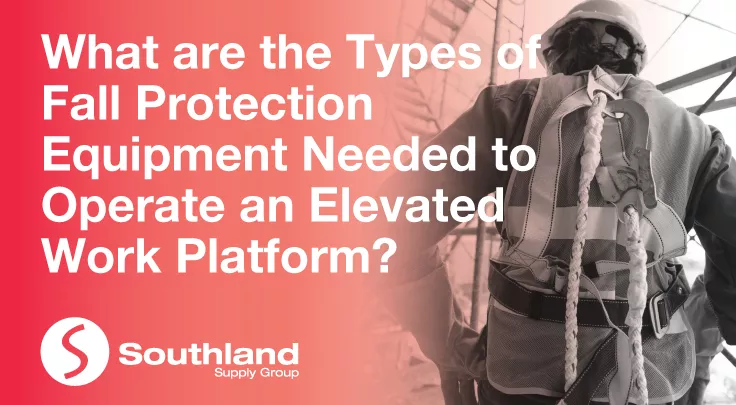
Fall protection equipment is vital when working at heights, including operating an Elevated Work Platform (EWP). The type of fall protection you need depends on the type of EWP you use, the nature of work performed, the height, and the specific regulations and standards in place.
Using the Proper Fall Protection Equipment
What kind of fall arrest system should your employees be using? A fall restraint system should be used to prevent workers from being able to fall from the EWP. This consists of a full body harness, and a shock absorbing lanyard.
A full body harness is the preferred piece of equipment in most circumstances.
As for lanyards, the length is a crucial factor you’ll need to consider. Adjustable length positioning lanyards typically provide the most comprehensive solutions for most high-safety scenarios.
In addition to this, when considering anchor points, make sure to select a location approved for use in fall protection. It is NEVER okay to use a guardrail as your anchor.
Other types of Fall Protection Equipment
Personal Fall Arrest System (PFAS): This type of fall protection is necessary when the lift height is greater than 6 feet. PFAS consists of a full-body harness, a lanyard, and an anchorage point.
Guardrails: Guardrails can be installed on the platform or along the edge of the lift to prevent falls. They provide a physical barrier between the operator and the fall hazard.
Safety Nets: Safety nets can be used as a secondary form of fall protection when the height of the EWP is significant. They are placed beneath the lift to catch a falling operator and prevent injury.
Fall Restraint Systems: Fall restraint systems prevent the operator from reaching the edge of the EWP where a fall hazard exists. Typically, they consist of a full-body harness, a lanyard, and an anchorage point. The lanyard is attached to the harness and the anchorage point, preventing the operator from reaching the edge.
It is essential to review and comply with all relevant regulations to ensure the safety of the operator and others working at heights.
When operating an EWP, fall protection is crucial to prevent injury in the event of a slip or fall. The type of fall protection equipment needed depends on various factors and must be chosen based on the specific regulations and standards in place. It is also a requirement to conduct regular safety inspections and training for workers who operate EWPs.
If you need more information about fall protection safety or want to browse a wide selection of fall protection equipment, visit our website at https://www.southland.com.au/ or contact us at 1800 77 22 91.
